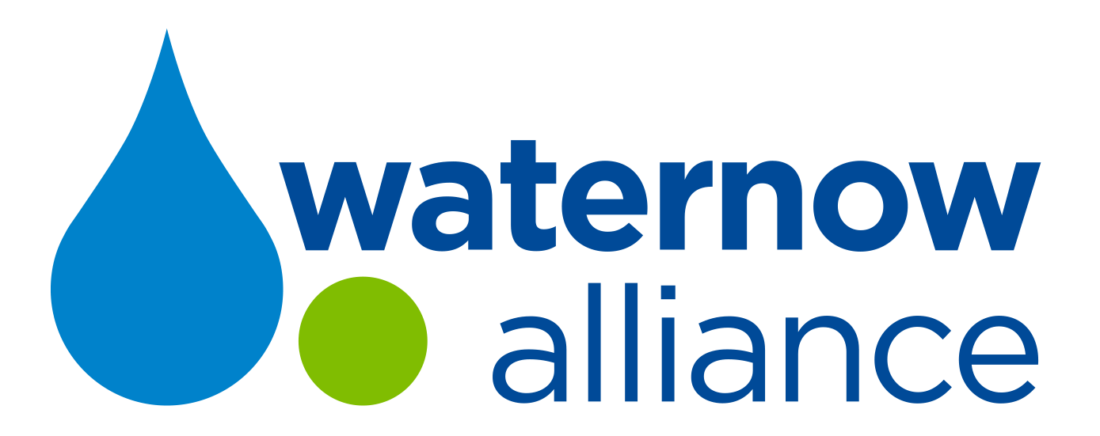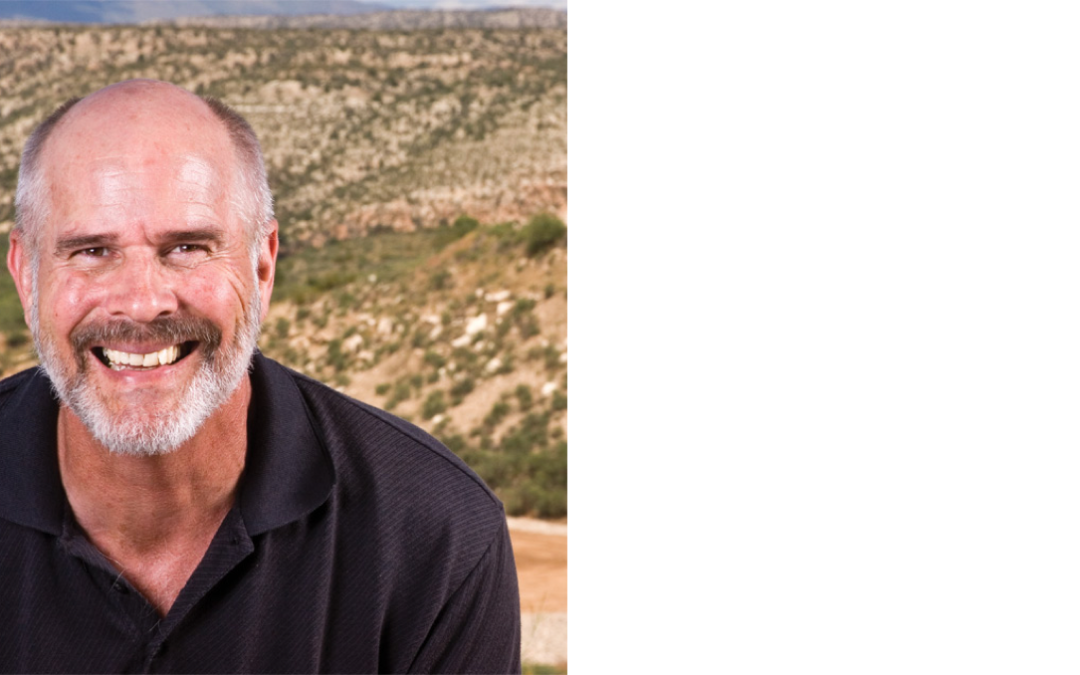Doug Von Gausig has served as Mayor of the Town of Clarkdale, AZ since 2004. He also serves on the boards of the Verde River Institute, the Verde River Valley Nature Organization, the Northern Arizona Municipal Water Users Association, and as the President of the League of AZ Cities and Towns. His environmental consulting company, Riparian Systems Consulting, focuses on the conservation of southwest rivers. Doug has been a WaterNow Alliance Member since 2017.
I spoke with Doug about his leadership efforts in promoting a water future in the Verde River Valley that protects the well-being of both people and the environment.
Why did you initially decide to run for office in Clarkdale back in 2004? What issues were you most interested in focusing on if elected?
I had already been involved in Verde River conservation for a long time. In 2004, a very large development had applied for a permit in Clarkdale and I ran for Council because I was concerned that the development would be built without sufficient environmental safeguards. In Arizona, we’re already using more water than can be naturally recharged so I wanted to have a voice in determining what happened to this development project and future projects.
In 2006, the Town of Clarkdale voted to acquire your local water utility company. What was the main driver here and how has it impacted local water management?
The main driver behind the acquisition was the fact that under Arizona municipal law, a municipality that doesn’t own its water utility doesn’t have authority over its water resources. For example, in the absence of the acquisition, the city wouldn’t have the authority to adopt a water conservation code requiring water wise appliances or xeriscape.
The purchase of the water company gave Clarkdale some control over its water conservation destiny. In 2004 our average GPCD (gallons per capita per day) was 148; today it’s 65. That happened because we were able to implement a tiered rate structure that differed from the previous company’s rates.
This became a big public issue because we were telling people that they were going to go from paying $14 on their water bill to $45. Anytime you make that kind of manifest change on people’s rates and expenses on a monthly basis, you have to have some pretty good reasons for doing it. We engaged in a 5-year long process of public engagement and in the end our ratepayers supported the increase because they were concerned about the sustainability of our water resources. We were able to educate them and also listen to their views about how to address this issue. They felt part of the transaction along with the Council. I don’t know exactly how many people supported the rate increase, but I think a fairly strong positive indicator is that I was re-elected to the Council.
What programs do you credit with helping Clarkdale to manage its water more sustainably?
I’ll always say that the huge drop in GPCD is due in large part to the rate increase. If you have an accurate pricing signal for a resource - whatever it is you’re selling - people have the option to buy it or not buy it.
We also have a series of water shortage stages which the town institutes during the summer before monsoon season in July. The stages progress from not being allowed to water your car to instituting specific outdoor watering days to not being able to refill water features. The stages are posted on the main street in town and people can go to our website to learn more and to make sure they’re in compliance.
We also established a list of primarily native plants appropriate for the local terrain that barely require watering. We wanted to give people an alternative to what they were doing with their landscaping because once we raised rates, it meant people with a lot of landscaping were paying hundreds of dollars on their water bills. We also built a demonstration garden of all native plants around the town hall building.
How do Clarkdale’s water utility staff and councilmembers work together in making important decisions about the utility?
The staff and Council work very closely together on all of the water utility goals and strategies. For instance, once we bought the water company we learned that we had gigantic system losses. These were 100-year old pipes held together with bubble gum basically, so we were experiencing water losses between 35% and 40%. So we changed out all of the water meters in town which brought water losses down considerably and then modeled the entire system to track where the additional losses were occurring. Now every pipe has been replaced with brand new infrastructure and we finally have our system loss under control.
The Council also reviews all proposals for new development and ensures that the developer has implemented sustainability measures necessary for our system. The Council is very supportive of the utility staff and sets all of the policies for the utility to follow.
Why do you think that sustainable water management in the Verde River Valley is so important? And what are the main challenges to achieving a sustainable water future?
The primary threat to the Verde River is dewatering which could occur because of the over-consumption of groundwater which contributes to the base flow of the river. The Verde River is 100% groundwater discharge and the necessary recharge only occurs in higher elevations where there’s sufficient snowfall.
We serve about 65,000 people in the Verde River Valley and 100% get their potable water from the ground. But all of the water they’re pulling from the ground is on its way to being discharged into the Verde River. Our best guess after a comprehensive process of estimating future water needs in the Verde River is that the population in 2050 will be 205,000 people in the Verde Valley. That calculation defines the problem. How are you going to go from 65,000 to 205,000 and still have a Verde River that flows perennially?
That’s why you have to convince the people of the Verde Valley that they want this river to continue to flow so they’ll make sacrifices like putting up with higher water rates and decreasing their consumption. If we want them to be okay with this, and not just throw us out of office, then they’re going to have to care about the Verde River.
We’ve made a concerted effort to make the river an economic driver for the region. From a river conservation standpoint, tying the health of the economy to the health of the river was the biggest step we could have made. It allowed us to make all of these conservation changes that otherwise would be pretty distasteful to people and difficult politically.
You serve on a number of boards focused on protecting the Verde River Valley, including the Verde River Valley Nature Organization, the Verde River Institute, and the Verde River Basin Partnership. What are these groups trying to achieve?
The primary objective of all of these organizations is to keep the river flowing and to keep a healthy riparian habitat in the Verde River. The river has some of the highest biodiversity in the state of Arizona. It’s also some of the most pristine habitat in Arizona.
Specifically, the Verde River Institute focuses on water quality and we also take 400-500 people in kayaks each year out on the river to expose them to the river and explain to them why it’s threatened and what can be done to reduce that threat. We do water quality monitoring to explain how water quality is impacted by different stressors on the river. This data is then used by policymakers and ourselves to promote more active conservation. We’ve found if you don’t have these very clear measures and figures to report out, then no one is listening.
Friends of the Verde River are working on invasive species removal and habitat restoration along with all kinds of citizen science. They’re bringing people out to the river to work on cleanups and riparian health, among other things. They’re also running an annual Verde festival which has a huge economic impact.
Today there are primarily four nonprofit organizations working on Verde River Issues – The Nature Conservancy, Oak Creek Watershed Council, Verde River Institute and Friends of the Verde River. In addition, the "Verde Front" process brings all the local government organizations together to work on economic development as a strategy of river conservation.
Finally, what do you think is the biggest challenge facing local urban water utilities in Arizona today? And what are the most promising strategies for addressing these challenges?
I could name a lot of things that are challenging for utilities. One issue is that all private, commercial utilities are governed by the AZ Corporation Commission. If you’re a small private utility in rural Arizona, it’s very expensive to go to the Corporation Commission to request a rate increase; so many don’t do it. That means that their customers are still paying rock-bottom prices for water which gives them no incentive to conserve. To fix this, the Corporation Commission could create an off-the-shelf rate system so that small private utilities can come in and adopt this rate structure for very little cost. I think you would see a huge difference in water consumption in rural AZ if this happened.
In the Verde River Valley, the real challenge is we have this looming population boom that will be in need of water in 2050. So we’re going to have to get radical - we’re going to have to do potable reuse and get to the point where people don’t water their yards. When someone wants to build a new development, they’ll have to work with the Verde River Exchange to do conservation projects to save as much water as that development will use. With all of these strategies, I think we can have those 205,000 people here and not consume any more water than we’re consuming today.
There are voices calling for the development of new water supplies that will harm the Verde River. These are incredibly expensive projects because to develop new water resources you have to run pipelines from far off places. Those kinds of $100 million projects are just not what’s happening these days in politics and I think the costs of these projects are going to keep them unapproachable for a pretty long time.
So my particularly thinking is, ‘okay folks just use less and do whatever it takes to stay within your means.’

